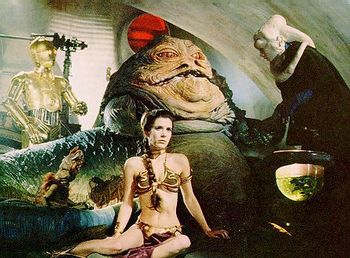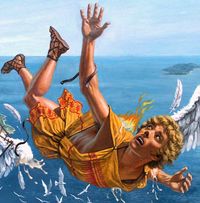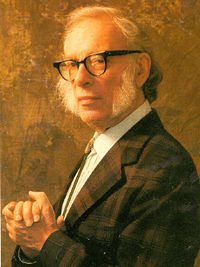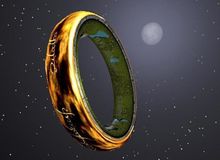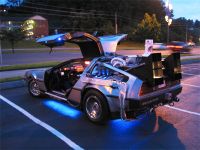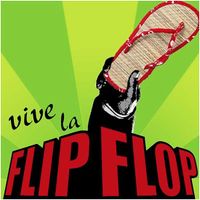Uncyclopedia:Imperial Colonization/Science fiction
- Colonisation
See talk page for more. Start writing below this line. Nominally Humane! some time Thursday, 12:41, May 6 2010 UTC
Science Fiction offers readers and viewers conceptions of alternate realities; realities which are more realistic than reality itself. Science fiction is largely based on writing rationally about these real alternative possibilities, because it is extremely rational to believe that on every second planet capable of sustaining life there is an idyllic society that is only kept in peace due to a dogmatic justice system wherein even the slightest idle deviation from the norm will result in instant death. A death rarely rationed out to a small ratio of the population until real drama becomes possible when the main character justly poses an unpopular social problem with dog-like determination.[1]
Sci-Fi uses scientifically derived scenarios, such as:
- A setting in the future, in alternative timelines, or in a historical past that contradicts known facts of history or the archaeological record. In short, anything which takes the reader's mind off of the present day mess that our species has made of our home planet.
- A setting in outer space, on other worlds, or involving aliens, who are usually attractive and are just itching to make love to human starship captains.
- Stories that involve discovery or application of new scientific principles, such as time travel, or new technology, such as nanotechnology, faster-than-light travel, robots, or Pop-Tarts.
- A storied setting in which the hero dodges lasers, giant insects, or alien husbands.
Definition[edit source]
“Science fiction is what science fiction editors publish”
– John W. Campbell on Science Fiction
Science fiction is difficult to define, as it includes a wide range of subgenres and themes. So outside of saying that it's a bunch of made up stories which include some elements of scientific theory or fact, any published attempt to define science fiction is clearly incorrect and is blowing smoke where the nuclear furnace which we orbit at a rate of approximately once every 365 days don't shine.
The history of science fiction[edit source]
A long long time ago in a galaxy far far away, Science mythology was invented by a man named Plato, who surmised that the stars were tiny candles in the sky, and were actually the spirits of his ancestors who had somehow turned into wax. Wax continued to play a big part in sci-myth, as seen in the story of Icarus, the first Superman. Icarus a dull and impressionable lad, was persuaded by his father that human flight was possible if one attached feathers to ones arms with wax. Needless to say, Icarus found that flight was indeed possible for a short time, but due to the underdeveloped nature of the technology used, the wax melted as it was heated by the sun, the feathers fell out, and Icarus plunged to his death. This forever branded the Sun as history's first arch-villain.
Throughout the centuries nerds read Plato's sci-myth stories with serious and deep intent, and Icarus conventions attracted other nerds and one or two women from all corners of the province. Relics of these Ic-cons, sold on e-bay, provide us with many waxen clues to the ancient world.
Sci-myth rested on its laurels until Jules Verne, a silly Frenchmen who got tired of smoking Gauloises and scorning the English, decided to dazzle the world with his ludicrous visions of traveling hither, thither and yon. Alas, as much as he tried, he could not stop his habit of scorning the English. Pfffft.
H.G. Wells then came along, scared the bejesus out of everyone with his War of the Worlds, and thus lit a Plato-like candle under Orson Welles' career many decades later. Orson Welles' instant fame and subsequent career became the premier accomplishment of the literary genre of Science fiction. Later Edgar Rice Burroughs upped the ante on Verne and Wells, put Mars on the map, inspired many new SF authors, and paved the way for all of the super-heroes to come.
After the era of Verne, Wells, and Burroughs, a shimmer in the air appeared in downtown London. In a flash, an old police box materialized out of nothingness. Bystanders report that the door banged open, five men were tossed out onto the pavement, and the police box once again disappeared. The men, when questioned, claimed they had been commissioned by a doctor to travel through time and write science fiction that would far surpass that of the legends who came before them. The five giant's names were Robert Heinlein, Isaac Asimov, Ray Bradbury, Kilgore Trout, and Arthur C. Clarke.
Isaac Asimov, the Nerd[edit source]
"The Zeroth Law of Robotics is - you don't talk about the laws of robotics" ~ R. Daneel Olivaw
Isaac Asimov decided to write about robots and only robots. He wrote a Robot Series, the collection of stories "I, Robot" (which has since been perverted into a rape of classical literature), the Foundation Series, the Laws of Robotics, the Guidelines of Robotics, the Wax Robots, the Suggested Instructions to Follow if You are a Robot, and various other novels and short stories that had only robots as their characters. His publisher noticed the overabundance of the mechanical beings in his writings and changed a portion of them into humans before publication. Luckily, Asimov never noticed these changes as he was in a constant state of dementia, forgot that he had written the books that were published, and continued to write at a frenzied pace only later equaled by Stephen King and Nora Roberts.
Robert Heinlein, the Dean[edit source]
Robert Heinlein settled comfortably into the science fiction world, and eventually dominated it with books about his favorites pastimes--drugs, orgies and totalitarian regimes. His epic and complex stories of sex in totalitarian societies occurred while the lovers were waging war against intergalactic space insects won the hearts of millions. Some of them were even made into movies[2], depicting scenes of intertwined sex and violence supervised by a totalitarian military organization. His other works included classics such as Stranger in a Strange Land--a drug and orgy filled tale of a young man from Mars who transforms human society into Hippie Heaven)--a series of books about longevity and how living longer leads to new and innovative ways to incorporate drug use into your orgies, and a strange series of volumes concerning the futuristic use of melted wax in exotic totalitarian governmental experimentation.
Ray Bradbury, the Geek[edit source]
The Sci-Fi Heavyweight fight of the 20th Century--Bradbury vs Heinlein--occurred in Las Vegas on November 29, 1958. As the bell rang Robert Heinlein came out of his corner, looked at the bespeckled and quivering Ray Bradbury, drew back his right fist, then clocked Bradbury with his left, thus winning the fight at 9 seconds of the first round.
As a child Ray Bradbury apparently grew up in ravines, where sticks and stones did break his bones. He later grossed out the world with his horror fiction, and inspired thousands of scientists and space explorers with his sci-fi. While taking his readers to Mars, or transporting them via time machines to their inner child and inner arsonist, Bradbury's honoring of the human psyche defined sci-fi in new and emotional ways.
Kilgore Trout, the Bard[edit source]
Kilgore Trout, nicknamed "The Bard" by his jealous colleague Robert Heinlein, is the author of the Nobel Prize winning sci-fi opus Venus on the Half-Shell. One of his several hundred pulp novels, "Venus" tells the story of humanity on the brink, ready to topple at the touch of a feather but saved by the love of a good woman. Trout's other accomplishments range from the creation of the annual "Sci-fi Parade for Peace", which is held in hundreds of major international cities, to the invention of the word "quagmire" to describe the world's present situation regarding religious fundamentalism.
Arthur C. Clarke, the Visionary[edit source]
Arthur C. Clarke, a proper Sri Lankan-born Englishman who wrote 2001: A Space Odyssey, invented the satellite communication network, and brought the Sci-fi literature on wax into the 21st Century with his Waxmen of Jupiter trilogy, personified the prophetic branch of science fiction. He is also known for what came to be known as "Clarke's Three Laws" which stated that "elderly scientists are always wrong", "all possible things are impossible", and "magic exists."
Sub genres of science fiction[edit source]
One of the reasons why there are varied definitions of science fiction is due to science fiction being broken up into various sub-genres. A listing of these (and accompanying examples) is as follows:
Hard SF[edit source]
Hard Science Fiction consists largely of books that have never been finished, due to the extreme technical and specific nature of their texts. Most Hard Sci-Fi books go so far into every tedious process that is happening that no plot or story ever breaks thru. It wasn't until 1961, after twenty straight years of writing, that Arthur C. Clarke published the first Hard Sci-Fi book A Fall of Moondust. This book was written in three volumes, with the first 200 pages explaining the respiratory system of every being on Earth and how the constant conversion between Oxygen and Carbon Dioxide affected the weather which in turn affected the launch of the rocket which in turn...
See? Clarke couldn't help but bore us and drive us to drink. Heinlein couldn't write hard Sci-fi if his wife depended on it. Bradbury, don't even go there. Even Ben Bova and Charles Stross have tried it, only to be rebuffed at the geeky sci-fi conventions and at the fancy-dan bookstores. In fact, in the annals of science fiction only four of these books have ever been completed and published. And because of the sheer immensity of these books, they are normally used to counterbalance elevators or alter gravitational fields.
There are some people who actually read these four books, but they don't read them for any reason other than to find the smallest possible fallacy in the writer's calculations. The readers of these books call this "The Game".
Ringworld[edit source]
One example of "The Game" is the number of fans who spend lifetimes examining top-soil erosion charts just to announce to the world that in Larry Niven's novel Ringworld, the entire landmass would have long been washed away. Luckily these people use their massive amounts of time and intelligence finding fallacies in works of fiction instead of doing unimportant tasks like solving the energy crisis, saving the environment, or abolishing world hunger.
The same fans also point out that the Ringworld was not in a stable orbit, and would crash into the sun without active stabilisation. Niven fixed these errors in his sequel, The Ringworm Engineers, by explaining that the world was stabilised by copies of A Fall of Moondust being place at significant points, and the sheer weight of the the tomes was enough to keep the world in balance.
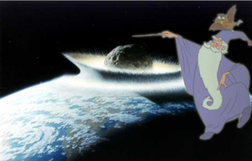
Soft SF[edit source]
Soft Science Fiction generally refers to Science Fiction that is more focused on plushy, soft or cuddly things. The most famous man to write in this sub-genre is Philip K. Dick, mainly because people like to make fun of his name. Another major writer in this sub-genre is Ray Bradbury who epitomized the ideal "soft and cuddly" by writing stories with tiles such as "The Long Plushy and not Irritating to the Point of Insanity Rain", "The Smiling People", "The Soft, Plushy, Cuddly and not Homicidal Illustrated Man", "Here There be Soft and Cuddly Tygers", "Bang! You're Dead! But Soft and Plushy!", and many more.
Soft Science Fiction draws much criticism from Hard Science Fiction readers/writers on account that it contains a plot and is readable. Because of this closer connection to regular fiction, many more Soft Sci-Fi books are published than Hard Sci-Fi; however the fans of each type number roughly the same. The differences between these two groups can be seen at many different Sci-Fi conventions where the Hard Sci-Fi zealots act in a similar manner to the IRA. Well, they use lengthy papers full of incomprehensible theorems and large, strange diagrams instead of bombs and guns; but the hate is still there.
Bradbury's Influence on Soft Sci-Fi[edit source]
Due to his early acceptance as a "Soft Sci-Fi Master", many publishers stopped actually reading Ray Bradbury's work but just accepted his submissions. After twenty years of this negligence it was discovered that many of Bradbury's short stories, which had been printing faster than Deutsch Marks during the Weimar Republic, did not actually meet even the loosest criteria for Science Fiction; as they were about aliens of the Earthly sort, men who don't like the advancements in technology (which tends to be the opposite of Science Fiction), and believing himself to be a metaphorical Captain Ahab. To hide their mistake, publisher's criteria for Soft Sci-Fi was all but obliterated, making almost every book ever printed technically fall under this category.
Brave New World[edit source]
Brave New World was a Soft Science Fiction book that supposedly takes place in 2011, in which the two main characters Ridley Scott and Leonardo DiCaprio ingest large amounts of Soma and have a shared hallucination. In this hallucination, they see men who have apparently all become letters of the Greek Alphabet as they all classify themselves as Alphas, Betas, Deltas, Upsilons, Kappas, and Plutos. Everyone in this hallucination also ingests soma, and the "Brave New Worlds" that each creates through their hallucinations are what the title refers to. Throughout this book, the men and women all realize that if everyone pitches in together and works to help the government and global elites, then everyone will be happy and joyful. Realizing that "joyful" and "government" were antonyms, this book was immediately labeled as Heinleinian fiction, and later "Soft Science Fiction" under the Bradbury loophole.
Cyberpunk[edit source]
Cyberpunk sci-fi, like most things now considered passé, emerged in the early 1980s[3]. It's name is a portmanteau combining "cyber" (an abbreviation of Cybersex) and "punk" (an archaic term relating either to a prostitute or a male used for unwilling sexual congress, or alternatively, a modern term relating to a person with anti-establishmental tendencies who doesn't follow societal rules).
"If this was a real article you'd all be dead" ~ Hiro Protagonist
The first use of the sub-genre's name was coined by author Bruce Bethke in his 1983 self-named "Cyberpunk" short story set one hundred years into the past. By cleverly relating old west prison inmates having virtual sex by use of the then futuristic Morse Code the foundations of the franchise were set for all future would-be hacker-wannabes to obsess over. As can be gleaned from the name, the genre usually relates to dark, oppressive societies, and often included advances in pre-internet (Internet-like) information technology infrastructure meshed with advanced "gotta-have" commercial products. Nihilism, post-modernism, and film noir themes and techniques are commonly used, often repeated endlessly to a point of redundancy.
Although noted for its focus on "high-tech and low-life" themes, Cyberpunkology is best experienced in a "low-tech, high-life" comic-book form. Primarily known through radio and film, CSF is no longer available through government programs, but now easily accessible to its fanbase through the ironic courtesy of Megacorporations[4].
| “ | It was a cold musky morning in William Gibson's head when the terms Cyberpunk and Cyberspace were coined. The draft coming from the cerebral cortex cleared the clouds of billowing smoke typically obscuring Gibson's conscious thought. A crowd of semi-conscious hackers, wearing slacks covered with machine oil and stray Ethernet cables, were nodding their head gloomily as they listened to Gibson laying out his plan to conquer the world of Science Fiction by force.
"Don' 'stand you, mon, but we mus' move by Jah Love, each one" said one of the nodding hackers. Just remember - I no come to hear about how horse dead an' cow fat. Jah love man, Jah love". Gibson, completely oblivious of the Rastafari proverb, and busying himself by hacking the pentagon, took the Rastafari's words as a vote of confidence. He let his busy mind fly, thereby bringing about--by the grace of Jah and Jah's honored prophet Neal Stephenson--cyber-sci-fi. |
” |
— Philip K. Dick, on the birthing manual of what many call Cyberpunk - Neuromancer
| ||
The Matrix Trilogy[edit source]
The first film of The Matrix Trilogy featured a reluctant hero, Neo, who discovers he has been subjected to a virtual universe created by sentient robots who had taken over the world, but then escapes by using extreme violence. It was followed by the groudbreaking second movie which is set predominantly in a virtual world where the reluctant hero, Neo, has to use extreme violence on sentient robots in order to escape. The third movie in the series, a real nailbiter, centers on Neo escaping from a virtual world created by sentient robots by using extreme violence.
The series has been hailed as one of the most original trilogies of all time.
Time Travel[edit source]
The Time Travel sub-genre of Science Fiction derives its name from a multitude of overly complex discussions, correspondences, and fireside chats which eventually were encompassed in two easy to say words. Thus, the sub-genre of Time Travel was formed.
Sci-fi's Time Travel books and movies adhere to some of the most rigid criteria of all time, which state: "Something must move or interact with time in some way within a work of known literature." It was quickly noticed that everything was always moving through time, including the books and movies themselves. This led this outlet to be defined as just another sham sub-genre, although it became, and has remained, the most popular form of science fiction.
Doctor Who[edit source]
Doctor Who is a well known "British" television series that involves a crazy man who flies through time and space in a police box abducting picking up hookers women and saving the world with a screwdriver. Largely believed to have started around the mid 1900s, the television show "Dr. Who" has actually been being beamed to earth by some form of alien intelligence since before mankind could walk up-right. The motives behind this broadcasting are highly unknown, but are thought to be some sort of plot against Earth which results in large delays between the airing of each season while the episodes are being checked for any sort of harmful presence. The main character of the alien show, called "The Doctor" most times, has been seen bringing worlds to their collective planetary knees using only semi-witty banner and the afore mentioned screwdriver; which is believed to be a "show of strength" by the aliens who are beaming the programme.
Alternate History[edit source]
"He who controls custard, controls the universe" ~ Paul Atreides
The majority of alternate history science fiction centers around three main concepts.
- What if someone else won a war. The earliest example of mainstream alternate history science fiction followed theme 1, it was written by a patriotic Frenchman Louis Geoffroy, in which France won the Napoleonic Wars, this prompted the British Empire to write a strongly worded letter claiming the story was 'A pile of bloody crap', the Russian Czar on the other hand took matters further, forcing Yakov Smirnoff to abandon the famed Russian Reversal debating technique and claim that "Russia beats YOU!!!" This caused a minor international incident, resulting in a huge dent in the popularity of the genre.
- After this early setback most writers opted for a new theme, What if someone went back in time and killed Hitler, resulting endless repetitions of the idea that:
- Someone even worse took over and the Nazis won the war. (A potentially dangerous overlap with theme 1)
- The rise of an even more powerful Soviet Union and the Cold War escalating into a real or 'hot' war.
- The resulting controversy prompted many authors to abandon any attempt at seriously thinking about major world politics and turn to the far more intriguing idea of What if you went back in time and changed your past.
Though a great deal of authors began by toying with the idea of protagonists accidentally becoming their own fathers, this was widely rejected by the mainstream as being far too Freudian.
Back to the Future[edit source]
Back to the Future is considered to be the archetypical example of this sub-genre. This series centres around the idea that the protagonist could go back in time and get his mother liquored up and become romantically involved with her in his car, while his father becomes slowly rejected and feels that he has been visited by and alien from another galaxy who tortures him by playing heavy metal at him in his sleep.
Due to the social mores of the time the storyline instead was twisted instead so the protagonist helps his father sleep with his mother instead of doing it himself, despite the obvious Freudian sub-text. This concept combined with vaudevillian humour, something never before seen in a sci-fi film, resulted in a block buster success.
Apocalyptic Science Fiction[edit source]

Apocalyptic science fiction deals with the end of the world and usually the bit that happens after the end of the world as well. At the heart of every apocalyptic fiction novel is the struggle of the angst ridden protagonist to deal with unending loneliness and a desperate attempt to preserve what little remains of their society.
Before 1945, all apocalyptic science fiction attributed the end of the world to an act of God, but after the bombing of Hiroshima and Nagasaki humanity realised that they could do it themselves. Modern apocalyptic science fiction sees humanity destroying itself through the frenzied use of, viruses, nuclear weapons, weather manipulation and Zombies.
The Bible[edit source]
- Cool Main article: The Bible
The first example of apocalyptic science fiction to enter popular culture was the Bible, which featured not just one, but two apocalyptic events, which could go some way to explaining its enduring popularity and the cult-like following that surrounds it.
Most readers enjoy the first half of the book, in which the descendants of Noah and his family (survivors of the first apocalypse) struggle to re-establish civilisation and populate the world aided by God, doves, and wax. The second half of the sci-fi novel introduces two of the most popular characters, Jesus and his his mom. Soon Jesus and God embark upon a quest to save the world from itself, a common sci-fi theme, and in an unexpected twist this quest results in both the death of the hero and humanities slow decline into oblivion. What did the human race do wrong? They failed to accept the hero as their lord and saviour! This bleak message has often led to critics describing the final chapter of the sci-fi classic, entitled Revelations, as being 'too preachy', 'too confusing', or, recently, just 'too trendy'.
Soylent Green[edit source]
One of the most famous, most used as a parody base, and most used examples of apocalyptic science fiction, second only to the Bible, Soylent Green is set in 2022 in an overcrowded city. It is about a detective who is investigating a murder, and discovers that Soylent Green is PEOPLE!
Military S.F.[edit source]
Military science fiction is an important sub-genre of Sci-Fi as its purpose is to warn and prepare humanity for the inevitable war with the first Aliens we come across. Most military sci-fi is written by ex-soldiers, and so their books tend to focus on the military values of loyalty, bravery, duty, and hardcore porn rather than on mundane things such as an original plot. Inspired by the worldwide military policy of taking whatever they want, most military sci-fi authors lift their plots from historical wars (such as the American Civil War or the Battle of the Bulge).
Starship Troopers[edit source]
Starship Troopers is often referred to as the original book in the sub-genre of Military Sci-Fi. It centers around the story of armoured infantry in a war against Arachnids, otherwise known as Bugs, who have destroyed Buenos Aires. The novel has been criticised as being overtly political, militaristic or pro-military, fascistic, utopian, and racist.
The book was made into a motion picture by legendary sci-fi director Paul Verhoeven, who made major changes to the story to remove many of these elements while exaggerating others. The movie has been widely criticised as being craptastic. [5]
Space Opera[edit source]
The Space Opera sub-genre, which focuses on portraying space battles, inherits its name from the musical storytelling form that is normally associated with Mozart, Vivaldi, and fat women with loud voices. The term "Space Opera" was coined when William Shatter, who played Captain James T. Kirk on Star Trek, sang through the entire first episode of the series (although some say he was just talking in a strange speech pattern). The sub-genre is know for large, flashy battles, main characters with strange speech patterns, and music composed by John Williams.
Star Trek[edit source]
- Main articles: Star Trek, Star Trek: The Next Generation, Star Trek: Deep Space Nine, Star Trek: Enterprise, Star Trek: Voyager, Star Trek: Series Guide, Red Dwarf (which is, contrary to popular belief, part of the British version of Star Trek) and many, many more
The original 1960s Star Trek, which pioneered the advance of Sci-Fi onto television, was a prime example of the Space Opera sub-genre due to it's focus on flashy effects over any discernible plot. Due to Mr. Spock's logic and mutated ears, Captain Kirk's broad muscles and suicidal disregard for himself and his crew, and storylines which broke new ground solely because television was in its infancy and just starting to get around to some of the really good stuff, twenty-thousand men and twenty-five women across America have since adapted the show into a religion. Filmed on a measly budget of $47 and change, and using only thrown out cardboard boxes for scenery, the show was able to "wow" Americans by having William Shattner rip off his shirt before killing a red-shirted minor character, or a piece of rock, or a mop, or a barely describable patch of fog. The afterthought of a plot in each episode was so full of holes that male fans would dispute what actually happened until they went on enraged killing sprees, while its female fans would understand that Kirk was only trying to do his best.
After a half a dozen movies, four more television series, and thirty or so stars on the walk of fame in Hollywood, the Enterprise enterprise is still going strong. The same can't be said for William Shattner, whose career has plummeted like a Klingon war vessel.
Star Wars, Stargate, The Last Starfighter, etc.[edit source]
Take one part Edgar Rice Burroughs' Mars' princess in distress, two part's Heinlein's militaristic nightmare, a dash of Shakespeare here and there, some cool sound effects, and mix them together with any good sniffing glue and out pops Star Wars. Geeks left their basements in the millions to witness the spectacle of a midget, a Jonas Brothers wannabe, and two automated can-openers defeat the Lord of the Universe-- a guy with breathing problem dressed in a cape. After the merchandising cashflow windfall from the first movie, the special effects money flowed and the first true trilogy was formed. The only things of importance that lasted after the first three movies (labeled 4-6) was the promise of six more movies, and Starship captain Harrison Ford (we told you earlier how much alien women like starship captains) going on to be featured in his own line of dusty hat and surprised look pseudo-Sci-fi series, and a endless amount of other Sci-Fi movies with "Star" in their titles.
The dangers of science fiction[edit source]
The tendency of science fiction to predict the technology of the future, such as the automatic sliding door (first featured in the visionary program Star Trek) or Human flight (pioneered in the flight of Icarus), has often lead to disasterous attempts to use the proposed technology before it is fully developed.
Though most accidents that occur due to science fiction are harmless (such as running headfirst into closed doors), occasionally tragedy can strike. The first victim of applied science fiction, as mentioned above, was a young Greek boy named Icarus. However death by sci-fi is not just an occurrence of ancient history. Misunderstood science fiction continues to claim victims even into the present day, perhaps the most chilling example is the 1995 JATO Rocket Car incident.
The bad new always comes at the end of the party, or in this case, both this article and human history. We are all going to die in 2012, and this can be directly blamed on the Science Fiction genre. This inevitable date with destiny, long seen and admired by Aztecs, psychics, and people on good mushrooms (as well as some of those on middling quality mushrooms), involves a "perfect storm" of science fiction themes turned deadly.
We can pin this on Frank Herbert, the creator of the classic Dune series. Starting with Herbert, and working its way through Roddenberry, Greg Egan, and Rudy Rucker, nanotechnology came about because writers wrote about it and unsrupulous scientists then went ahead and patented it. Then what's going to happen is the 2012 sunspots and particle storms will sweep over the Earth's electrical grid and let loose all of the nanobots into the world's drinking supply (damn you Ice-9!), turning our innards to waxlike machine-goo. And there is nothing that can be done about this. Machine goo, all of us. All we are is guck in the wind.
So live it up until late 2012 (some people, those who have the really good mushrooms, will live a little bit into 2013, but don't count on seeing Valentine's Day). And if you meet one of those sci-fi geeks, all dressed up like some damn alien or minor player in a two-bit movie, punch their lights out. It's their fault, for encouraging the writers.
Machine guck. God damnit!
See also[edit source]
References[edit source]
- ↑ The extreme terminal nature laid down by these plots will sustain most pop Sci-fi writers.
- ↑ Terrible movies with Hollywood glitter morals replacing insightful cometary on society, government, war, and of course, interaction with innumerable species in intergalactic space reduced to one other stereotypical instance. Ooh! And co-ed naked showers!!!
- ↑ As long as you discount the 1927 movie Super-Metropolis.
- ↑ Such as Disney or AOL-Time Warner
- ↑ But with co-ed showers.
